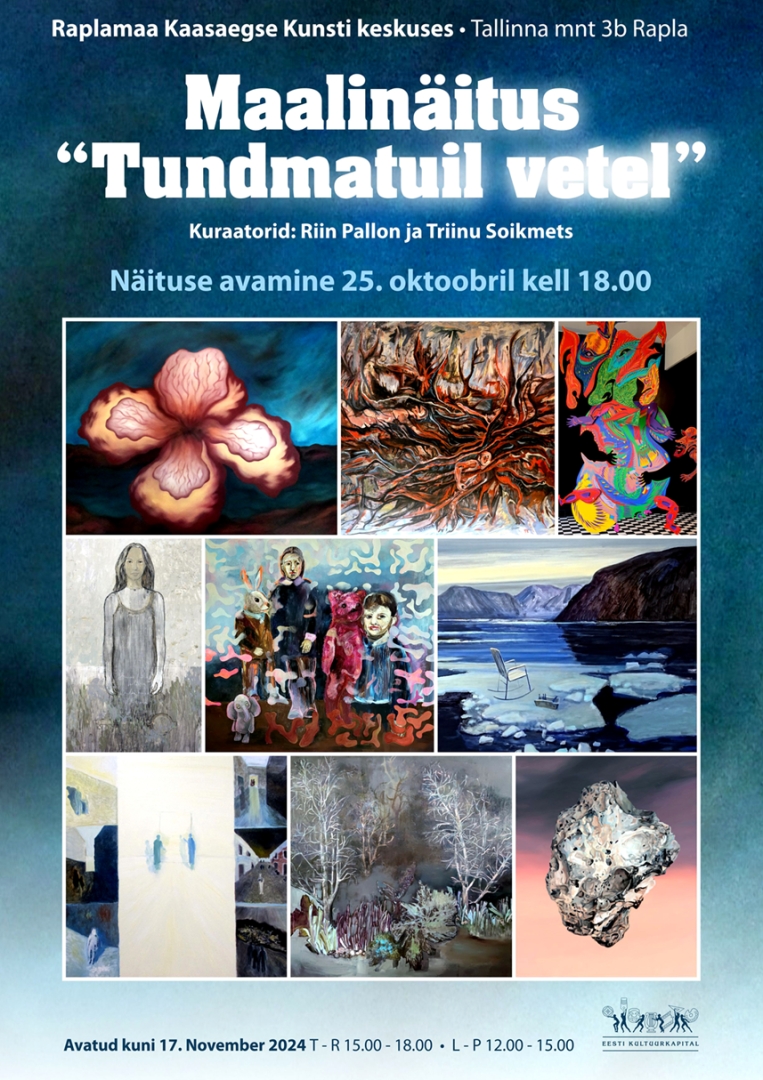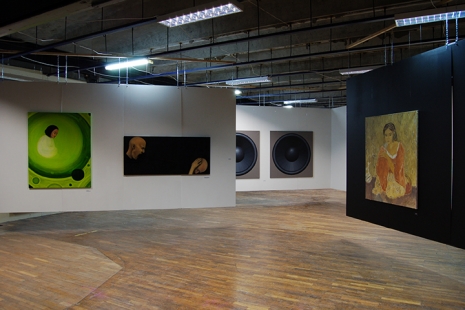The paintings featured in the exhibition convey a sense of fascination – a delicate balance between beauty and eeriness, guiding the viewer through a world of brushstrokes where shapes and meanings continuously re-emerge in new forms, laden with layers of symbols and hidden subtext.
For example, in dreams, a calm water surface symbolizes emotional equilibrium, while a stormy sea represents anxiety, ice suggests apathy, and rain signifies cleansing. In painting, water can take on other, outwardly similar forms, while the search for these forms – the painting process itself – can be compared to wandering through inner landscapes and emotional fields.
The exhibition is divided into four rooms – “Layers of History,” “Whirling in the Subconscious,” “The Future Comes Tomorrow,” and “On Distant Waters” – with additional alcoves. The journey traverses the past, the path of being human, the twists and turns of the subconscious, apocalyptic moods and future utopias, distant travels and reflections of the world, as well as water as one of our primary components, making up two-thirds of the human body mass.
Riin Pallon’s paintings create tense atmospheres, where the viewer finds themselves in a dizzying state – searching for balance but always slightly stumbling. Her works are visual simulacra, where reality and illusion intertwine, creating space for new realities that constantly appear and disappear. Manfred Dubov, on the other hand, engages with the curator’s starting point through the lens that painting reflects both individual and collective life, for example, genocide or the release of tension following a pandemic.
Eleriin Ello’s work draws from natural motifs and the interplay of light and shadow in a way that even meteoric rock formations in her paintings appear delicate and emotional. Marta Stratskas contrasts this with a colorful series of psychological portraits and surreal figures, dealing with familial bonds and love.
Leho Rubis’ figures, on the other hand, are solitary and isolated, with a more subdued color palette, speaking of consciousness and perception, the poetry of the inner world, reflections, foggy landscapes, and darkness during the day. Jenny Grönholm’s paintings are also devoid of light, emitting only an all-encompassing glow, where figures alternately emerge and disappear – a symbolic cycle of self-discovery.
Miina Barrera Pinochet’s symbolism compares a clear-cut forest to the complexity of the human soul, rooting oneself in a foreign landscape as a process of cleansing, and atmosphere as a metaphor for social relationships. Kalli Kalde addresses the water theme perhaps most directly among the exhibiting artists, depicting human figures alongside aquatic animals and birds in the many shades of deep blue.
Finally, Maria-Kristiina Ulas steps beyond the traditional painting format, moving away from the square canvas on the wall. For example, her plywood figure of a laughing Buddha, sculpted into shape, deals with the themes of soft, flourishing human forms, self-care, the birth of new life, and the generation of ideas.
Curators: Riin Pallon and Triinu Soikmets
Poster: Indrek Tuuga / Adograaf
The exhibition “On Unkown Waters” is open until November 17, 2024, Wed-Fri 3 PM-6 PM, Sat-Sun 12 PM-3 PM.
Supported by: Raplamaa Expert Group of the Cultural Endowment, Estonian Cultural Endowment





